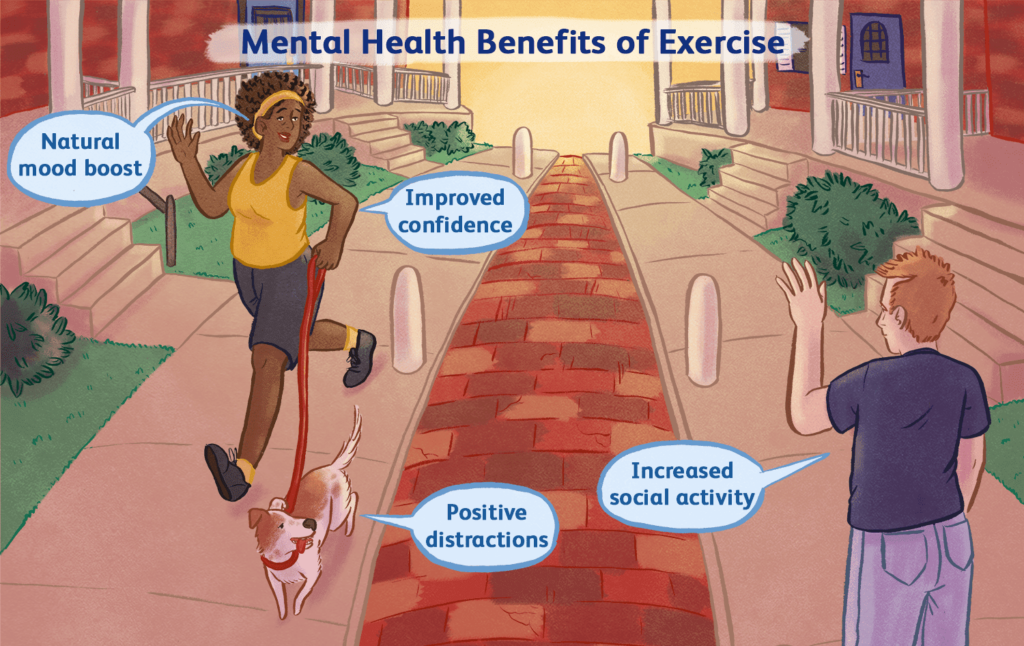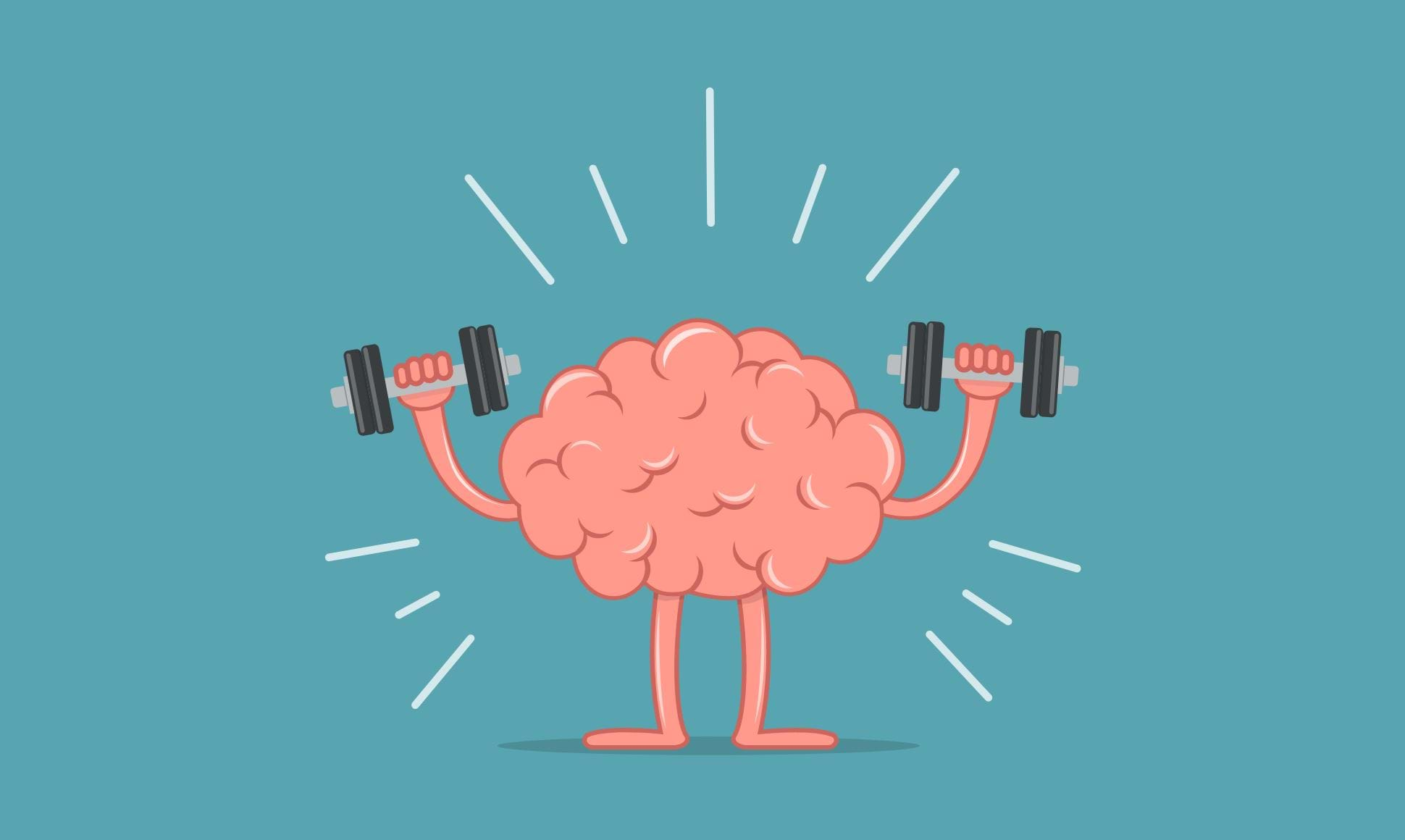Note : This weeks article is an essay of a psychology university student, you can send your research and be featured on weHappynow at support@wehappynow.com
Good and balanced mental health is a very important factor in achieving bliss. However, in today’s society, people’s mental health is in crisis. Specifically, based on the World health organization about 280 million people worldwide suffer from depression while 301 million suffer from anxiety (World Health Organization, 2019). These data reveal the urgent need to find ways to address it. Based on research, one of the most encouraging ways of coping is physical exercise (Biddle & Ekkekakis, 2005), with its effects even reaching to the creation of new nerve cells.
Stress and exercise
Stress is a mental health issue that leads to emotional distress and reduced daily functioning. Research is proving how physical exercise is a powerful tool to combat and mitigate the symptoms of anxiety (Callaghan, 2004).
One of the main ways to deal with stress is to regulate the body’s response to stress. Research has demonstrated how exercise triggers the release of neurotransmitters, such as endorphins, serotonin and dopamine, which enhance mood and promote feelings of well-being (Salmon, 2001). These neurochemical changes counteract the effects of cortisol, a stress hormone that is usually elevated in people experiencing stress. By reducing cortisol levels and increasing mood-enhancing chemicals, exercise creates a more balanced neurophysiological state that reduces symptoms of anxiety.
At the same time, regular physical activity has been shown to enhance cardiovascular performance, reduce muscle tension and promote relaxation by activating the parasympathetic nervous system (Salmon, 2001). These changes contribute to reduced normal reactivity to stressors, meaning that people who exercise regularly may experience lower levels of stress in response to stressful situations.
In conclusion, exercise is a scientifically supported intervention for reducing stress, working through both physiological and psychological pathways (Biddle & Ekkekakis, 2005). By modulating stress hormones, enhancing brain chemistry, improving resilience to stress, and providing psychological benefits, physical activity presents a holistic and accessible approach to managing stress (Salmon, 2001). Encouraging individuals to exercise regularly can be a valuable strategy for promoting mental well-being and effectively reducing symptoms of stress.
Effects on depression
As for depression, research has shown how exercise can also be an effective treatment (Callaghan, 2004). It is known how physical exercise protects against heart disease, diabetes, improves sleep and lowers blood pressure (Harvard Health Publishing, 2021). At the same time, through vigorous exercise the body secretes endorphins associated with good mood. However, low-intensity exercise that one can follow for a long-term period is more effective for better mental health. The reason is the production of neurotrophic proteins or growth factors. These proteins affect nerve cells by growing them and creating new connections (Harvard Health Publishing, 2021). This process takes place in the brain and as a result the person feels better. Specifically, Dr. Miller, an assistant professor at Harvard’s psychiatric school, reports how in people with depression the hippocampus, an area of the brain responsible for regulating mood, is smaller than in people without depression. It therefore points out how physical exercise helps to grow new nerve cells in the hippocampus, creating new nerve connections, which helps combat depression (Harvard Health Publishing, 2021).
The meta-analysis by Schuch et al. published in 2016 provides strong evidence that physical activity significantly reduces depressive symptoms, with effects comparable to psychotherapy and medication. The study looked at multiple randomized controlled trials and found that people who engaged in regular exercise showed a marked reduction in the severity of depression. These benefits are linked to several physiological and psychological mechanisms, including the release of endorphins, improved neurotransmitter function (such as increased serotonin and dopamine levels) and reduced inflammation, factors that are also targeted by antidepressant medications. In addition, exercise enhances self-esteem and provides a structured routine, similar to the benefits of psychotherapy (Schuch et al., 2016).
In contrast to other studies, they also highlight that higher-intensity exercise and supervised programs yield the most significant benefits for people with depression. High-intensity workouts, such as resistance training and aerobic exercise at moderate to vigorous levels, stimulate greater physiological changes, including increased neuroplasticity and improved cardiovascular health, which are associated with improved mood (Schuch et al, 2016). In addition, supervised exercise programs provide social support and accountability, which can improve compliance and motivation key factors in sustaining long-term mental health benefits. The presence of a trained professional ensures that individuals engage in safe and effective routines while receiving encouragement, further enhancing the positive psychological impact of exercise (Schuch et al., 2016). These findings suggest that while all forms of physical activity are beneficial, structured and higher-intensity programs may offer the most effective treatment for depression.

Neuroscience and exercise
Exercise has therefore been shown to exert an antidepressant effect through its effect on brain plasticity and neural regeneration. Complementing this, a study published in 2020 for CNS Neuroscience and Therapeutics reports how physical activity promotes neurogenesis, synaptic plasticity and the release of neurotrophic factors, particularly brain-derived neurotrophic factor (BDNF), which plays a critical role in maintaining neuronal health and function (Zhao et al., 2020). Research shows that individuals with depression often exhibit reduced neuroplasticity, including hippocampal atrophy and reduced neural connectivity (Schuch et al., 2016). By stimulating BDNF production, exercise counteracts these deficits, promoting neuronal survival and synaptic remodeling, which are essential for mood regulation and cognitive function (Zhao et al., 2020). These neurobiological adaptations highlight the role of physical activity as a mechanism for mitigating depressive symptoms beyond traditional therapeutic interventions.
In addition, exercise affects key neurotransmitter systems involved in depression, including serotonin, dopamine and norepinephrine. Similar to the action of selective serotonin reuptake inhibitors (SSRIs), physical activity enhances serotonin synthesis and release, promoting a sense of well-being and emotional stability (Zhao et al., 2020). In addition, dopamine transmission increases with exercise, enhancing motivation and pleasure, which are often reduced in people with depression. This neurochemical modulation suggests that exercise serves as a natural and effective means of restoring balance to mood regulation pathways in the brain.
In addition to its effects on neuroplasticity and neurotransmitters, exercise also plays an important role in reducing chronic inflammation, which is increasingly linked to the pathophysiology of depression. Regular physical activity has been shown to reduce levels of pro-inflammatory cytokines, such as interleukin-6 (IL-6) and tumour necrosis factor-alpha (TNF-α), while promoting anti-inflammatory responses that support neural resilience (Zhao et al., 2020). These findings support the idea that exercise acts as an integrated intervention, producing both immediate neurochemical benefits and long-term structural adaptations in the brain. Thus, incorporating regular physical activity into depression treatment plans may enhance therapeutic outcomes, providing a holistic approach to mental health management.
In summary, we can see how physical exercise helps to treat both anxiety and depression. Its effect on the brain’s neural networks provides hope for creating new and better habits, which as a result lead to a life of improved mental health.
Bibliography,
Biddle, S. J. H., & Ekkekakis, P. (2005). The influence of physical activity on mental well-being. Psychology Press. Retrieved from https://www.researchgate.net/publication/51356300_The_influence_of_physical_activity_on_mental_well-being
Callaghan, P. (2004). Exercise: A neglected intervention in mental health care? Journal of Psychiatric and Mental Health Nursing, 11(4), 476–483. https://doi.org/10.1111/j.1365-2850.2004.00751.x
Harvard Health Publishing. (2021). Exercise is an all-natural treatment to fight depression. Harvard Medical School. Retrieved from https://www.health.harvard.edu/mind-and-mood/exercise-is-an-all-natural-treatment-to-fight-depression
Schuch, F. B., Vancampfort, D., Richards, J., Rosenbaum, S., Ward, P. B., & Stubbs, B. (2016). Exercise as a treatment for depression: A meta-analysis adjusting for publication bias. Journal of Psychiatric Research, 77, 42-51. https://doi.org/10.1016/j.jpsychires.2016.02.023
Ratey, J. J., & Loehr, J. E. (2011). The influence of exercise on mental health. Annual Review of Clinical Psychology, 7(1), 587–607. Retrieved from https://www.researchgate.net/publication/266406071_The_Influence_of_Exercise_on_Mental_Health
World Health Organization. (2022). Anxiety disorders. Retrieved from https://www.who.int/news-room/fact-sheets/detail/anxiety-disorders
Zheng, G., Xia, R., Zhou, W., & Tao, J. (2020). Exercise, brain plasticity, and depression. Neural Regeneration Research, 15(5), 865–874. https://doi.org/10.4103/1673-5374.268884
Feel free to explore more topics on Personal growth & Psychology.

